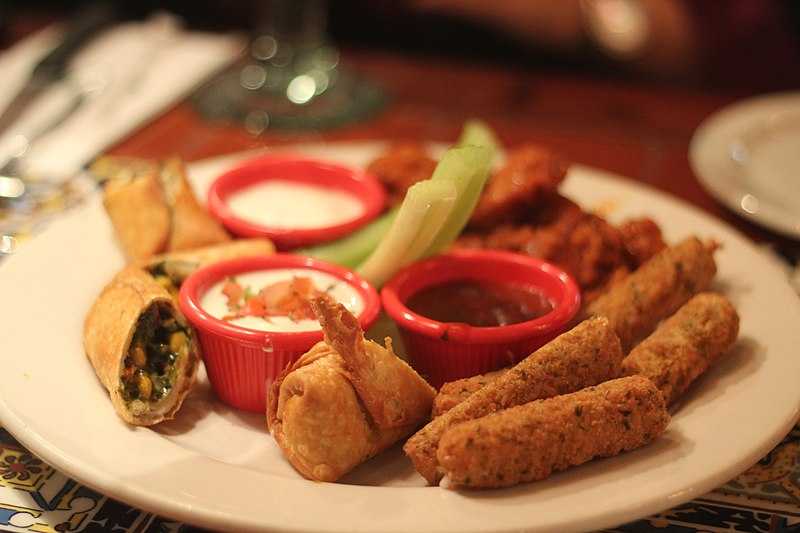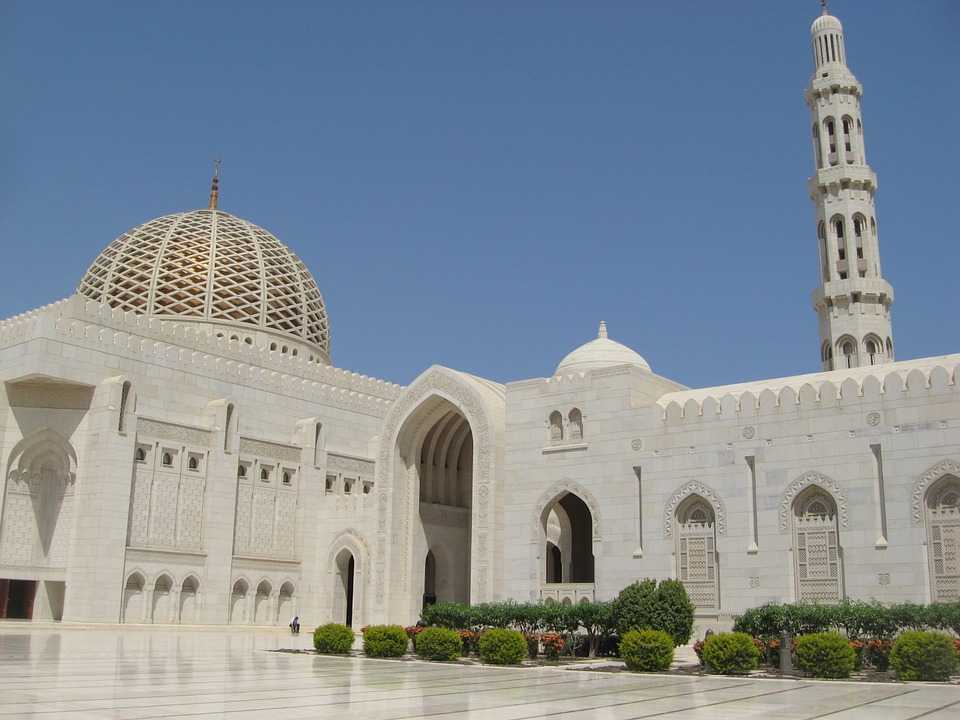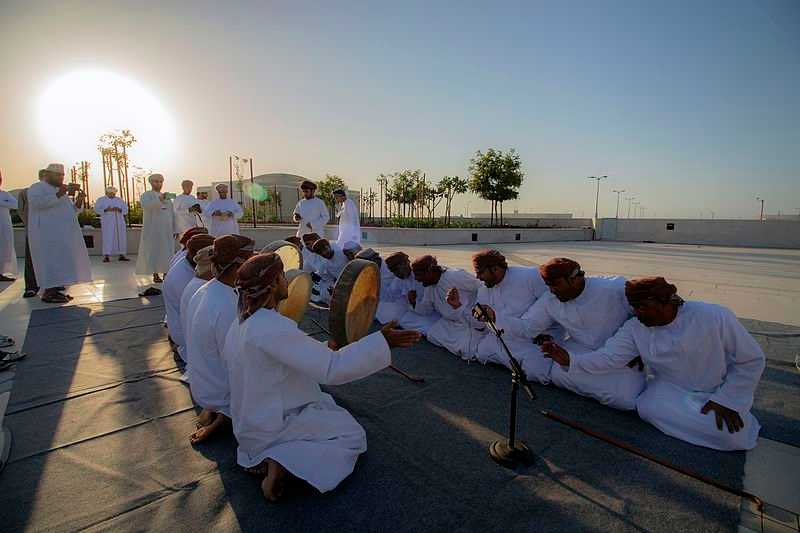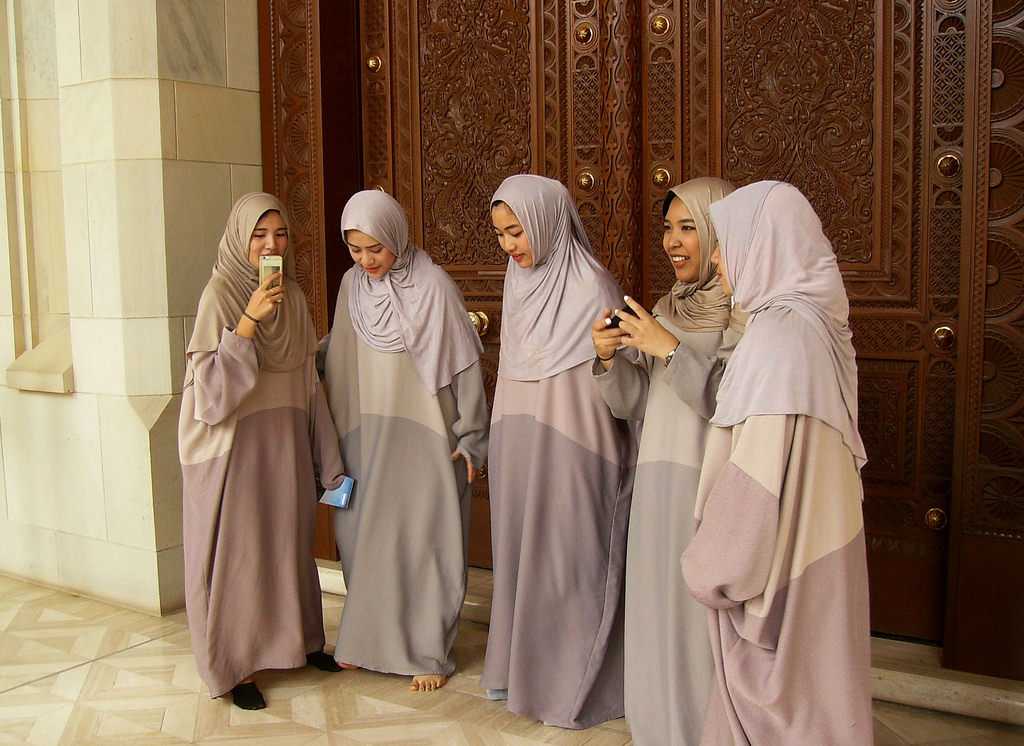Food of Oman

Arsia is a rice-based dish of well-roasted lamb served with a sour sauce called torshe. A similar variation of this dish is kabsa which is spiced saffron rice with meat. Hares Lahaam, an Arabic delicacy, features roasted lamb in a generous portion of ghee. Owing to its location in the Middle East, Omani food also includes delicious kebabs and shawarmas.
The Omanis have an assortment of traditional desserts as well such as Luqaimat which are deep-fried balls of flour flavoured with cardamom and halwa, although their halwa is wheat-based and slow-boiled over a wood fire.
Read more about Omani food.
Religion in Oman

In keeping with the austere nature of Ibadism, Oman's mosques are simple with little decoration and no minarets, unlike their Muslim neighbours. As per their religion, Ibadis do not drink alcohol and modesty is the norm. Women and men are expected to cover their shoulders, arms, and legs while in public. During the month of Ramadan, Oman is relatively quiet during the day and it is against the law to eat, drink or play loud music in public during this time.
The country ranks high in religious tolerance. Non-Muslim religious communities in the country include Hindus, Sikhs, Jews, Buddhists and Christians. Most non-Muslims in Oman are foreign nationals or migrants.
Read more about religion in Oman.
Social Customs and How to Behave in Oman

- The Omanis are humble but welcoming people. Public displays of anger are not permitted, neither are violent or rude gestures. They believe in conducting oneself properly in public to maintain a good reputation. As a result, it's important to avoid any situations in which an Omani may lose face in front of their peers. They will take it as a personal slight and it will reflect poorly on both parties.
- If you'd like to take photographs with locals, remember to ask for permission first, especially when it comes to Omani women. If they are not comfortable being photographed, it is best not to push the issue.
- If the locals take a liking to you, they are very warm and hospitable. It's common to be invited home where they would typically serve dates and Omani coffee.
- When visiting their home, it's customary to carry a small gift and to take off shoes before entering the premises.
- The formal address to a man is 'Sayed' and 'Sayeeda' for women, and it's important to greet the local people in the right way as civility is valued highly. Although it is not mandatory, the locals respond well to visitors who know at least a little Arabic, as it shows a conscious effort to learn their culture.
- They are particular about punctuality, so do keep that in mind while conducting business.
- The Omanis enjoy good conversation and it is polite, to begin with, inquiries about family, health, etc before beginning any talk about business. However, when making inquiries about family, remember to be tactful and limit questions about the women of the household.
- They do not appreciate sarcastic comments on religion or the Sultan, and will not take kindly to any remarks against the ruler in any way. In fact, these conversations can sometimes be considered treasonous. Therefore, try to avoid discussing the Omani government, its official, or the Sultan in conversations.
- Because Oman is a Muslim country, social interactions are generally segregated by gender. Handshakes are the most appropriate greeting, especially among business partners. As respect for elders is an important part of the culture in Oman, make an attempt to shake the hand of the most senior person before anyone else in a meeting.
Traditional Clothing in Oman

Read more about the traditional dresses of Oman
As tourism is a major economic activity in Oman, the locals have become used to tourists and expats in their cities. However, they remain traditional in their beliefs and it's best to remain respectful of their culture. Oman is a beautiful country with kind people and breathtaking landscapes, and you'll find that the culture in Oman is rooted in tradition, community and togetherness.
